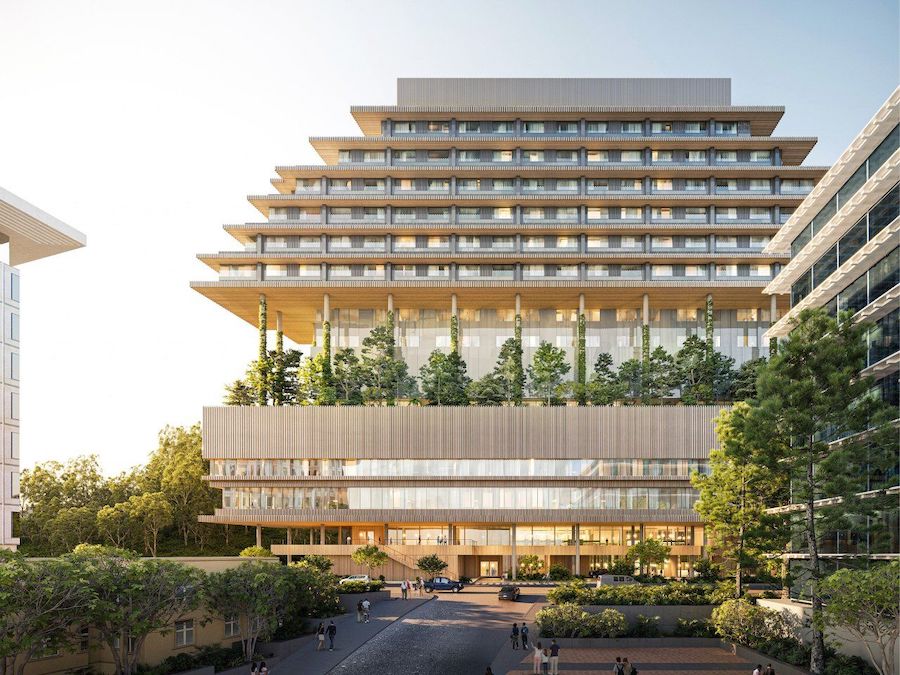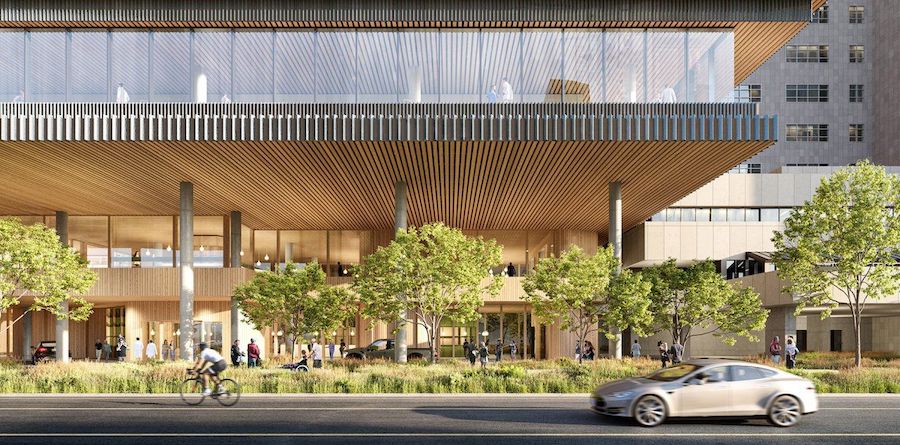Healthcare / Quality improvement
New San Francisco hospital to connect “park to peak” for healing energy
By Andrew Sansom | 20 Dec 2021 | 0
UC San Francisco has released the latest architectural visuals for a state-of-the-art hospital in the San Francisco neighbourhood of Parnassus Heights, with the design seeking to adopt a holistic approach to meeting patient care needs and take advantage of the surrounding nature to create a spirit of healing.
The conceptual images from design consultants Herzog & de Meuron and architect of record HDR, which UCSF selected to design the new hospital, are released to coincide with the project’s draft environmental impact report (DEIR), which opened a public comment period last week, as required by the California Environmental Quality Act.
The new hospital at UCSF Helen Diller Medical Center at Parnassus Heights will be the centrepiece of a comprehensive plan to transform the entire campus, which continues to drive innovations in care delivery, discovery, and health sciences education. In January, the University reached a memorandum of understanding with the City of San Francisco on community resilience and some wider determinants of health, by addressing mental health, housing, transit, jobs, and workforce development.
“UCSF is a leading force in healthcare – from our ground-breaking research, highly rated health sciences schools to our top-ranked medical centre – and it’s exciting to see this hospital take shape in the new architectural renderings,” said UCSF chancellor Sam Hawgood. “The new hospital will build on our history at Parnassus Heights and will strengthen our ability to serve the Bay Area for generations to come.”
Herzog & de Meuron and HDR are designing the hospital to meet “whole-patient” needs essential to healing, a focus that reflects UCSF’s integrated research, education and care delivery mission at Parnassus Heights.
With support from the Helen Diller Foundation for the planning, design and construction, the hospital will provide a healing environment that addresses social, psychological, spiritual and behavioural components of health in one place. Design features include advanced innovations, such as leading-edge diagnostic tests, robotics, and therapies, as well as humanistic aspects, such as the provision of light-filled private rooms, natural spaces, fresh air, and human connection. 
A hospital for the future
The new 15-storey hospital will: provide increased capacity for additional acute, emergency and intensive care beds; incorporate innovations in medical technology and equipment for advanced complex care; bridge scientific research discoveries from bench to bedside, leading to accelerated innovative treatments and therapies to benefit patients; feature environmentally sustainable design that integrates with the natural beauty of its setting; and generate employment for local labour during the construction, as well as further jobs once the facility opens.
Extensive landscaping on the street level and upper levels is an important element of the building design, which features a publicly accessible outdoor terrace and proximity to the surrounding nature of the Mount Sutro Open Space Reserve.
“UCSF has deep roots in the City of San Francisco and has grown symbiotically with the community in a neighbourhood located between Golden Gate Park and Mount Sutro,” said Jason Frantzen, senior partner of Herzog & de Meuron. “In designing this hospital, we’re re-imagining the space around it, connecting park to peak to make a positive impact in people’s lives.”
Expanding care
Founded after the Gold Rush to provide physicians for the county hospital, UCSF has since served San Francisco through several public health crises, including the 1906 earthquake and fire, the 1980s AIDS epidemic, and the ongoing Covid-19 pandemic. The past couple of years have demonstrated that UCSF must increase hospital capacity to serve emerging patient needs during public health crises, rather than reducing or cancelling non-essential surgeries to make room for patients with urgent needs.
Every year, UCSF turns away patients seeking care because of limited capacity at its Parnassus Heights hospital. In 2019 alone, some 3000 patients were unable to be transferred to UCSF owing to a lack of beds – a challenge that is anticipated to increase in future years with the Bay Area’s projected growing and ageing population.
 By building the new hospital, UCSF will be able to increase its overall bed capacity from 475 beds in 2020 to 682 beds in 2030. The University also will seismically retrofit Moffitt hospital and renovate both Moffitt and Long hospitals at Parnassus Heights to increase bed capacity to meet projected demand.
By building the new hospital, UCSF will be able to increase its overall bed capacity from 475 beds in 2020 to 682 beds in 2030. The University also will seismically retrofit Moffitt hospital and renovate both Moffitt and Long hospitals at Parnassus Heights to increase bed capacity to meet projected demand.
Community engagement
As the project moves forward, UCSF will be taking steps to minimise the hospital’s impact on the environment and neighbourhood, developing strategies designed to address wind, construction noise, and other factors. UCSF will also be implementing several improvements to support pedestrian and vehicular circulation, loading, utilities, and landscaping around the campus.
As stated in the DEIR, UCSF’s environmental sustainability improvement efforts are focusing on air quality, carbon emissions, water use, resources, biodiversity and open space, human health, and community wellbeing. The new hospital will also target a minimum level of LEED Gold certification.
Construction could begin in 2023, with the new hospital expected to open in 2030.
Organisations involved


